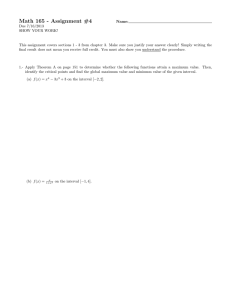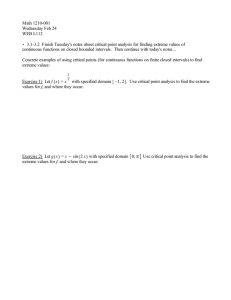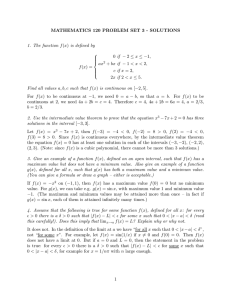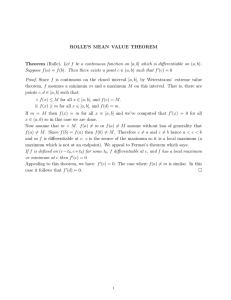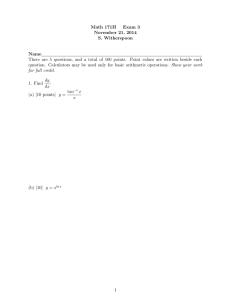Monday supplementary notes...These are definitions and facts from last Wednesday's... f I . (In other words, the
advertisement
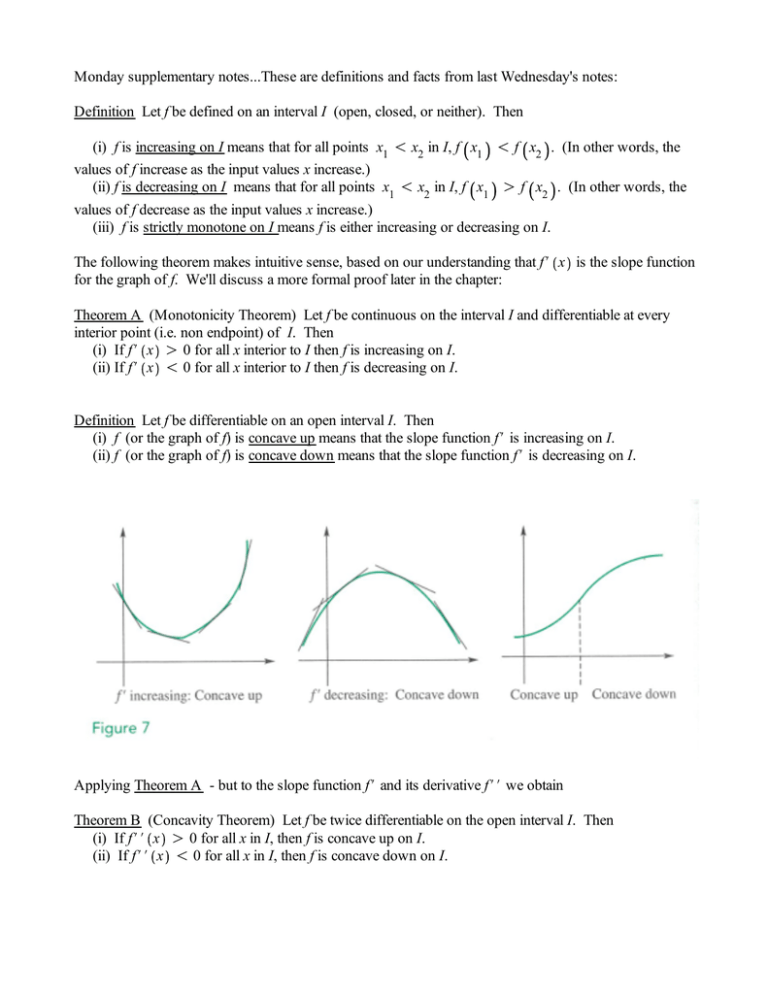
Monday supplementary notes...These are definitions and facts from last Wednesday's notes: Definition Let f be defined on an interval I (open, closed, or neither). Then (i) f is increasing on I means that for all points x1 ! x2 in I, f x1 ! f x2 . (In other words, the values of f increase as the input values x increase.) (ii) f is decreasing on I means that for all points x1 ! x2 in I, f x1 O f x2 . (In other words, the values of f decrease as the input values x increase.) (iii) f is strictly monotone on I means f is either increasing or decreasing on I. The following theorem makes intuitive sense, based on our understanding that f# x is the slope function for the graph of f. We'll discuss a more formal proof later in the chapter: Theorem A (Monotonicity Theorem) Let f be continuous on the interval I and differentiable at every interior point (i.e. non endpoint) of I. Then (i) If f# x O 0 for all x interior to I then f is increasing on I. (ii) If f# x ! 0 for all x interior to I then f is decreasing on I. Definition Let f be differentiable on an open interval I. Then (i) f (or the graph of f) is concave up means that the slope function f# is increasing on I. (ii) f (or the graph of f) is concave down means that the slope function f# is decreasing on I. Applying Theorem A - but to the slope function f# and its derivative f## we obtain Theorem B (Concavity Theorem) Let f be twice differentiable on the open interval I. Then (i) If f## x O 0 for all x in I, then f is concave up on I. (ii) If f## x ! 0 for all x in I, then f is concave down on I. Application example (either today or tomorrow): Snell's Law for how light refracts when it moves from one medium to another (for example from water to air, or vise verse): Let the speed of light in medium one be v1 , and let it be v2 in medium two. Assume the two media are separated by a plane (as in figure). Let q1 and q2 be the angles the light paths make with the perpendicular to the interface. Then Snell's Law says sin q1 sin q2 sin q1 v1 = or equivalently = . v1 v2 v2 sin q 2 Snell's law is a consequence of Calculus (stationary point and first derivative test), and Fermat's Principle which says that light follows the paths that minimize the total time it takes for the light to get from point Q to point P in all media. Here's the explanation, which we will discuss and enlarge upon. https://en.wikipedia.org/wiki/Snell%27s_law

